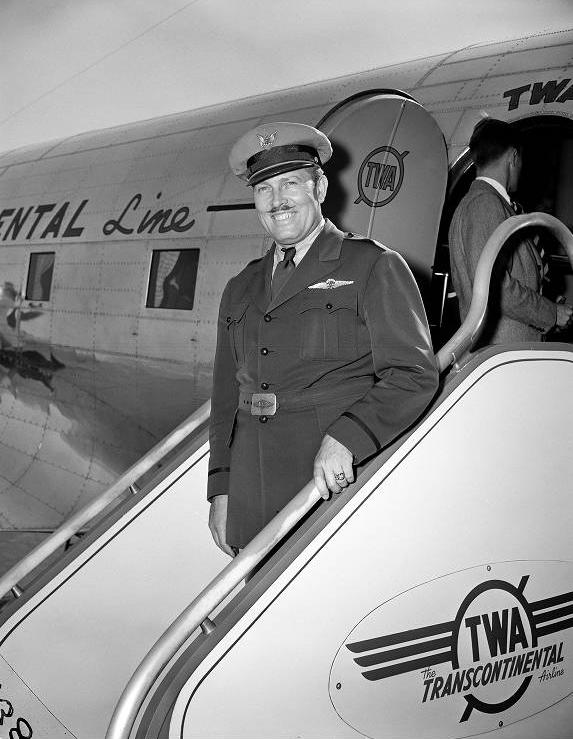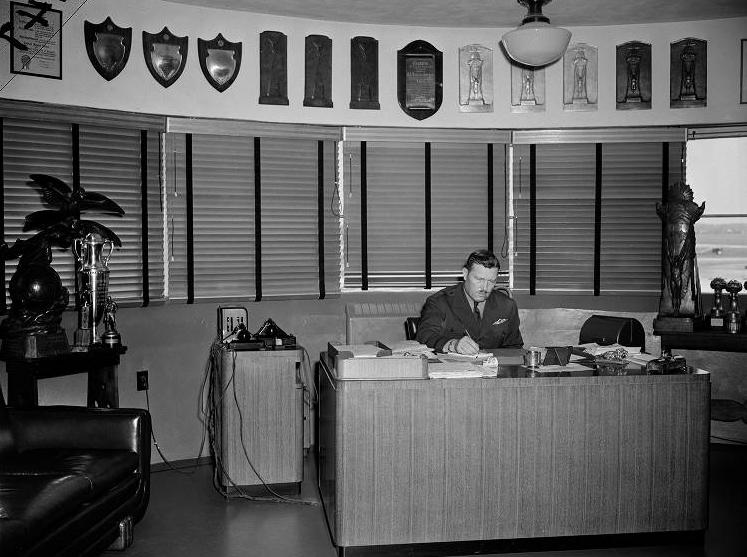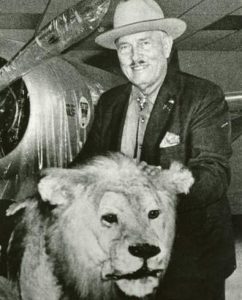(Sept. 29, 1895-June 23, 1970). One of America’s greatest air racing pilots, Roscoe Turner was born in a log cabin near Corinth, Mississippi. An early interest in automobiles led him to work as a truck driver, mechanic, and enlistment in World War I as an ambulance driver. Transferred to the Army Signal Corps, Turner was commissioned a 2nd lieutenant and sent to Europe as a pilot. After the war, Turner formed a “Flying Circus.” This group performed numerous aerial thrill acts throughout the South, along with aerial promotions for several clothing stores and other retailers.

In 1925, Turner bought America’s largest air transport, the 14-passenger Sikorsky S-29A. The twin-engined plane, which featured a fully enclosed cabin, quickly became popular as a deluxe charter craft and promotional vehicle for various businesses. In 1929, the plane was sold to Howard Hughes for use as a German Gotha bomber in the World War I air epic, Hell’s Angels.”
The same year, Turner formed Nevada Air Lines, operating between Los Angeles and Reno. Using a Lockheed Vegas (a six-passenger high-wing monoplane airliner built by the Lockheed Corporation starting in 1927), the line claimed to be the “Fastest in the World.” Unfortunately, the Great Depression struck, and the manufacturer repossessed the company’s planes after only seven months of operation.
Turner made his major air race debut at the 1929 National Air Races, when he scored second and third in two closed circuit races, flying one of the Nevada Air Lines Vegas planes. He then finished first in both the transcontinental dash and a speed dash at the 1933 Nationals as well as first in the Thompson speed race in 1934. He won the Thompson again in 1938 and 1939, becoming the first and only three-time winner of air racing’s premier speed dash.
During this time, Turner also grew in commercial popularity alongside his aviation “partner,” Gilmore the Flying Lion. As part of a marketing deal with Gilmore Oil Company, Turner brought the lion cub with him on several flights as well as to other public appearances.

In 1934, Turner and his crew flew an American Boeing 247D airliner (first constructed in 1933—the first aircraft to fully incorporate all-metal [anodyzed aluminum] construction, fully cantilevered wings, and retractable landing gear) to second place in the transport division of the world’s longest race, the MacRobertson Trophy Race from London to Melbourne, Australia. His other flying awards included the Henderson Trophy (for America’s No. 1 Speed Pilot) three times and the Harmon Trophy (for America’s Premier Aviator) twice.
Following his 1939 Thompson win, Turner established an air school in Indianapolis. Operating from the Municipal Airport, the school trained pilots, mechanics, and control tower operators for both civil and military positions. In 1947, he formed Turner Air Lines, a local service line, selling his interest in 1950 when the line was renamed . Turner remained active in his airport operation until his death.

Help improve this entry
Contribute information, offer corrections, suggest images.
You can also recommend new entries related to this topic.





